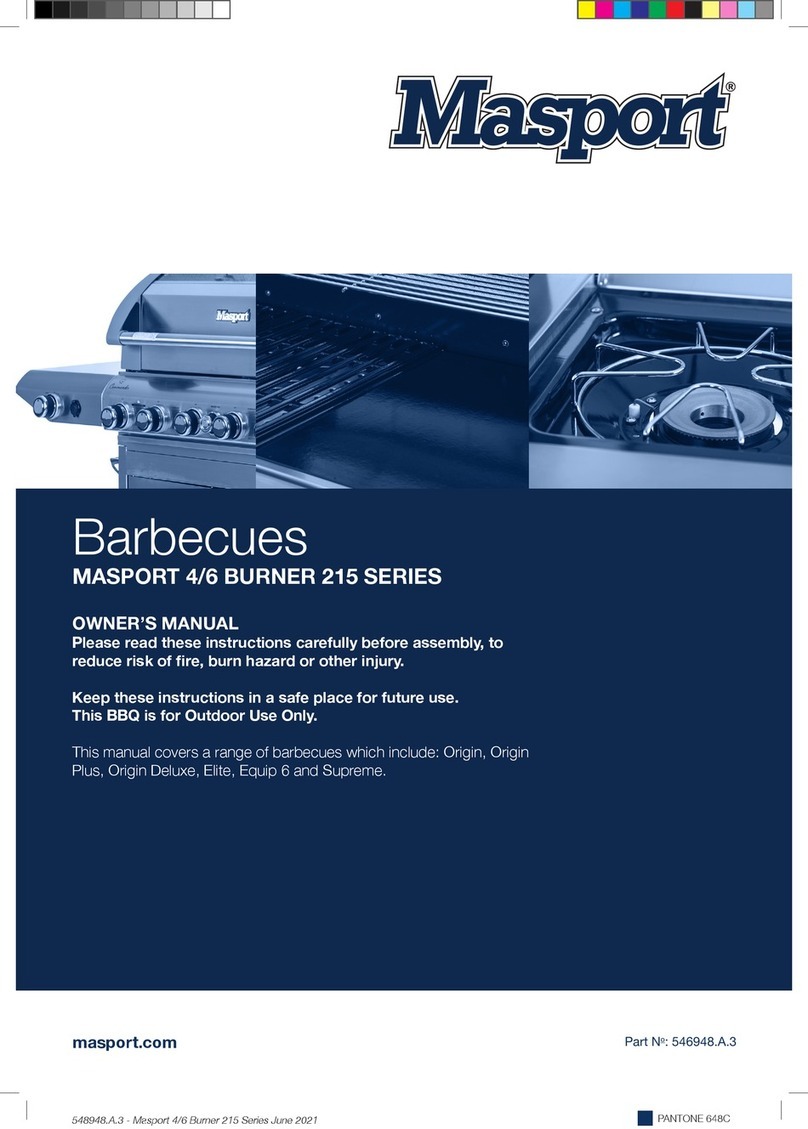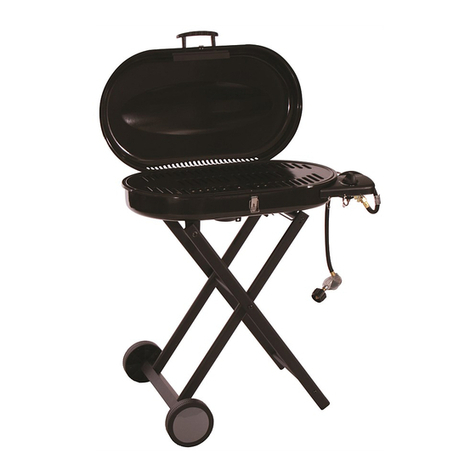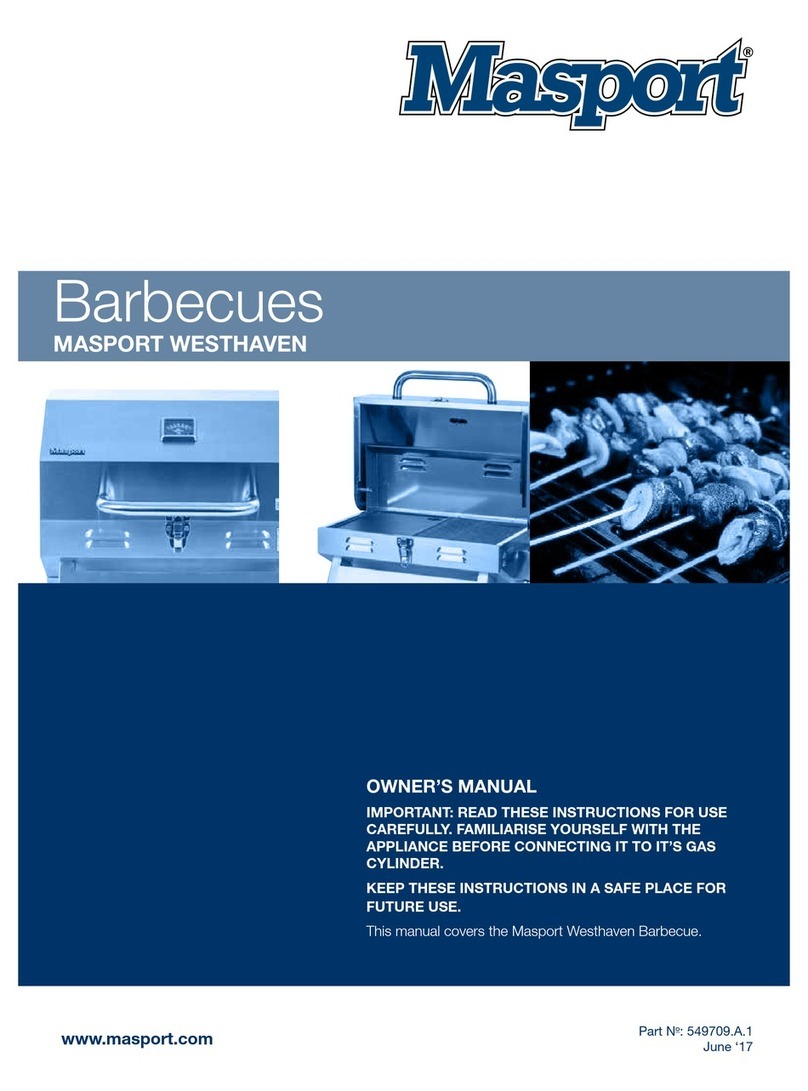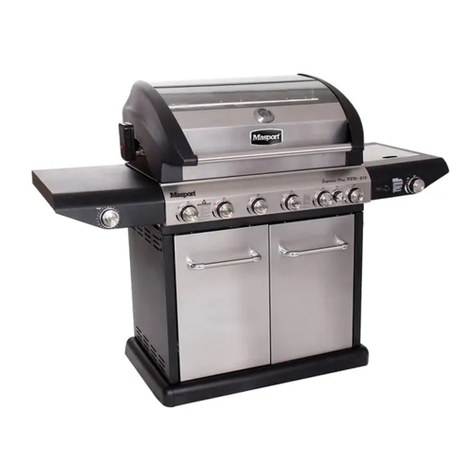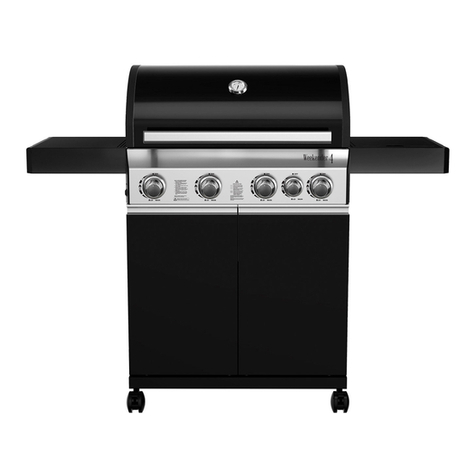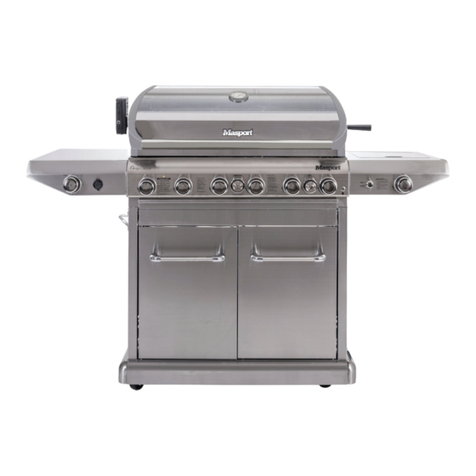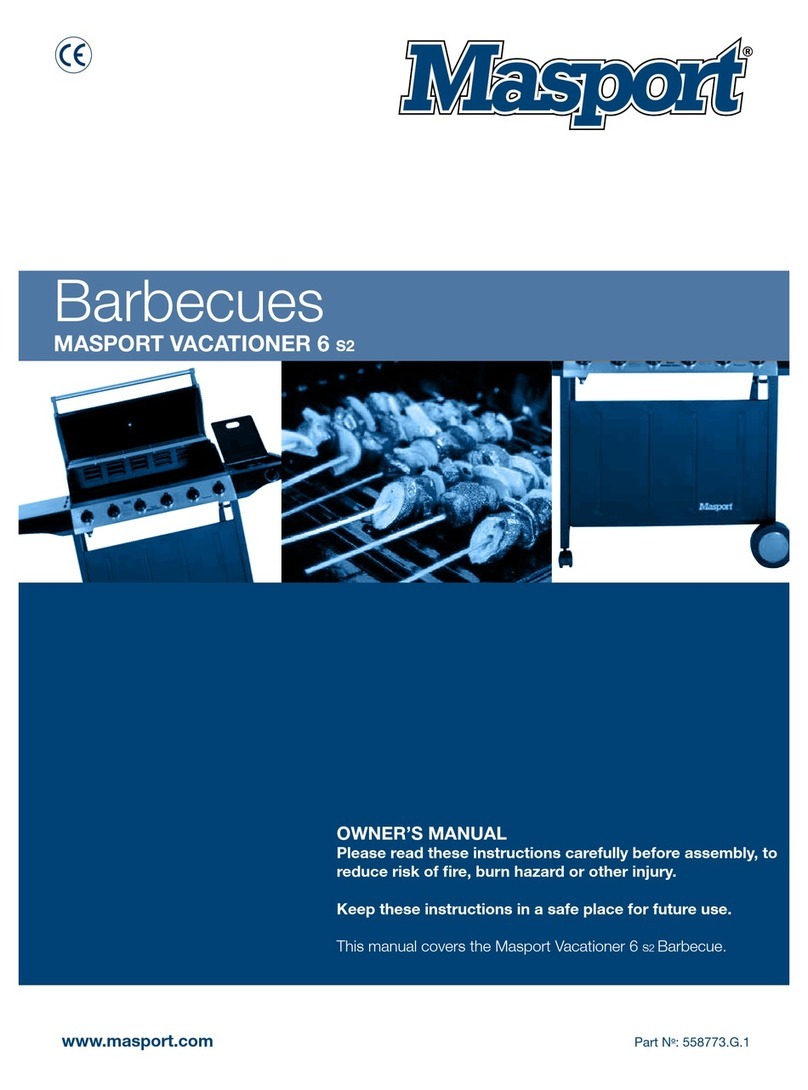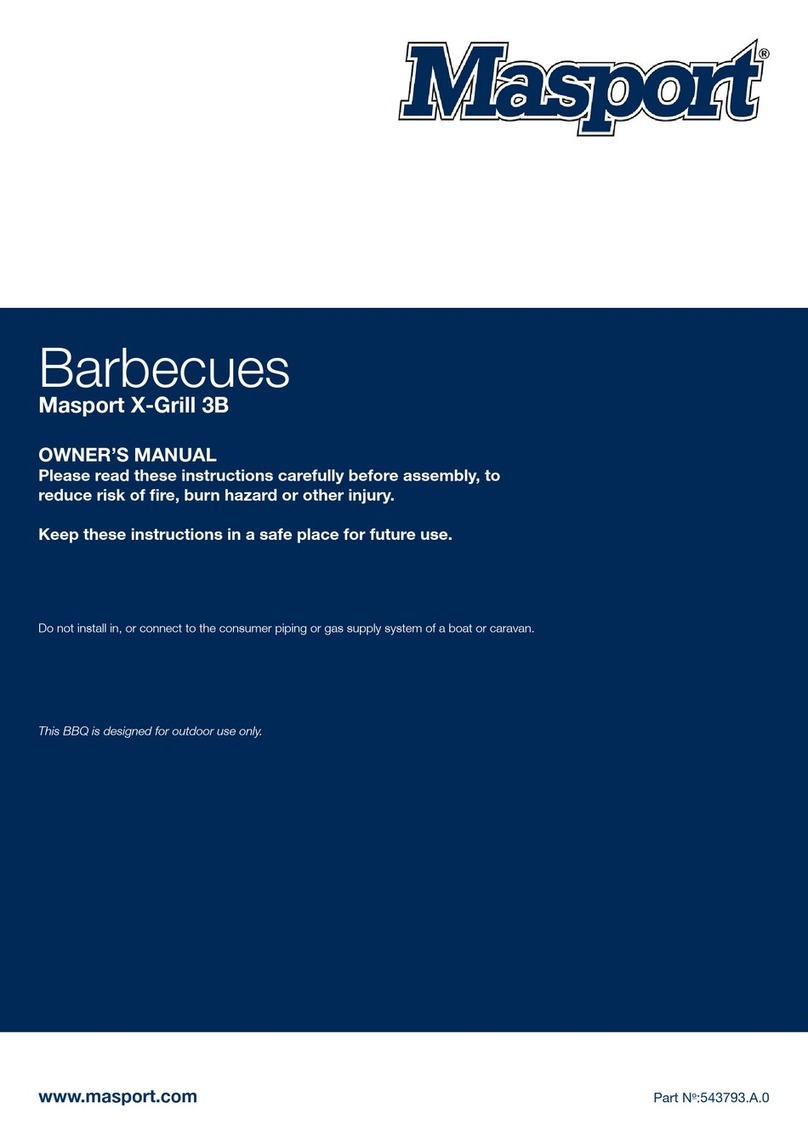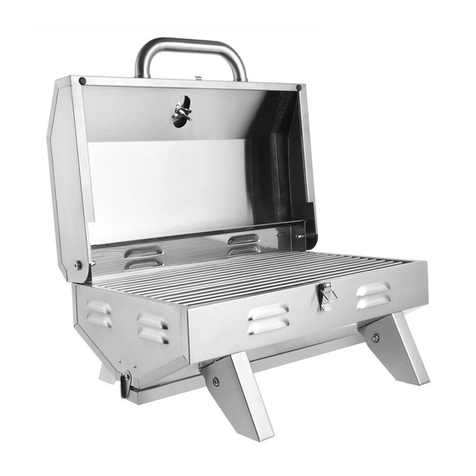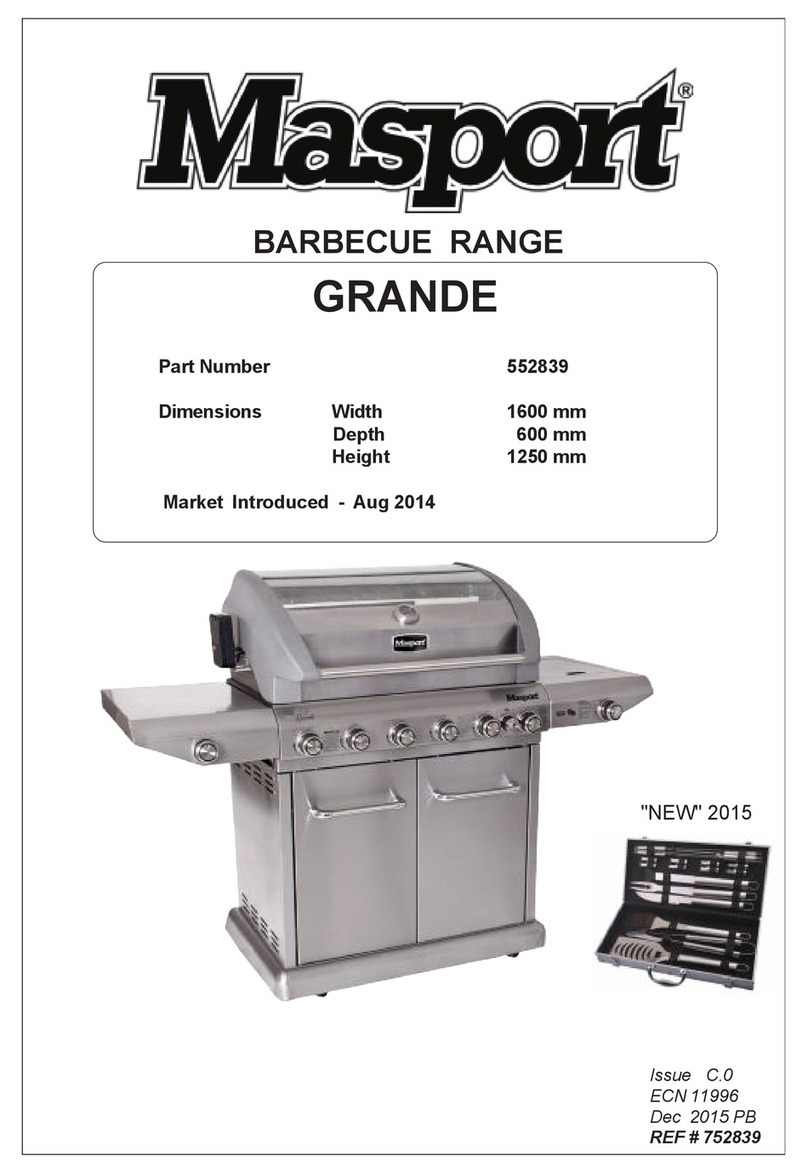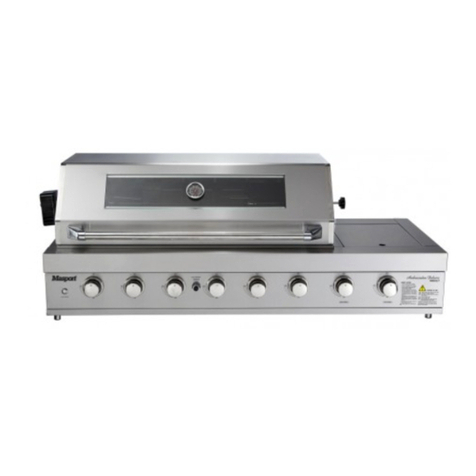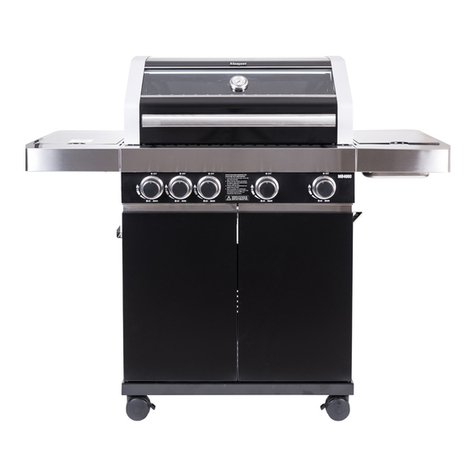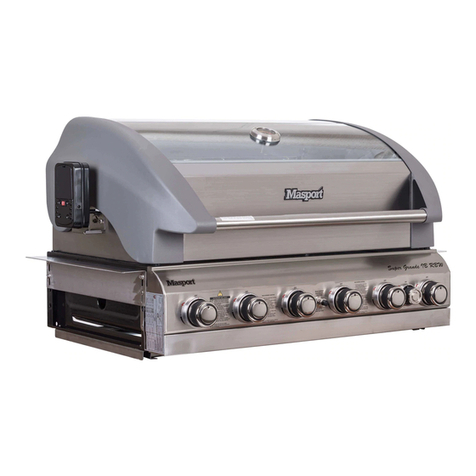2
Contents
Safety and warranty Information 2-3
Parts 4-6
Assembly instructions 7-13
Location Information 14
Leak Testing 15
Lighting Instructions (Operation) 15-16
Rear Burner, Timer Care and Maintenance 17-19
Technical Data 20-21
Troubleshooting 22
Optional Extras 23
Do not operate this BBQ before it has been
assembled correctly and you have read and
understood these instructions.
These instructions are intended as a general
guide and do not supersede national or local
codes in any way. Contact local Authorities for
clarity of laws relating to the operation of this
appliance.
Symbols in this Owner’s Manual
Possible hazard or hazardous situation.
Not observing this instruction can lead to injuries or
cause damage to property.
Important information on proper handling.
Not observing this instruction can lead to faults in the
BBQ.
User information. This information helps you to use all
the functions correctly.
Failure to follow these instructions could result in fire or
explosion which could cause property damage, personal
injury or death.
Accessible parts may be very hot. Keep young children away
from the hot appliance at all times (even while cooling down).
Some parts of this grill may have sharp edges especially as
mentioned in this manual! Wear suitable protective gloves if
necessary.
Assembled parts sealed by the manufacturer must not be
altered by the user. Any modification of the appliance by
unauthorised persons may be dangerous.
Important Safety Information
Please read and understand this manual fully before assembly and
use.
• The Manufacturer’s Warranty may be voided by the incorrect use
of this product.
• The Manufacturer or their Agents can accept no liability for the
unsuitability of, or any damage to, food that is cooked on this
appliance.
• Use the correctly specified fuel with this barbecue. Check with
your dealer for the specific fuel for which this barbecue has been
designed.
Owner’s Manual
• The operator must understand all the safety requirements detailed
in this manual before using the barbecue.
• If you have any queries regarding these instructions, contact your
local dealer for clarification before you use your barbecue.
• The unit must be correctly assembled before use. Failure to follow
the manual’s instructions could result in serious damage or injury.
Personal Safety
• The use of alcohol, prescription or non-prescription drugs may
impair the consumer’s ability to properly assemble or safely
operate this barbecue.
• The barbecue should be carefully checked for operational use
every time before use.
• Never try to move the barbecue when it is on, or before it has had
time to cool down.
• The person operating this barbecue should pay constant attention
to the food being cooked.
• Do not leave the barbecue unattended when it is alight. The
person should remain at the barbecue at all times when it is
alight/cooking.
Third party safety
• The operator is responsible for the safety of all third parties while
the barbecue is in use.
• Onlookers should be kept a safe distance away from the
barbecue when it is in use.
• Keep children and animals well away while the barbecue is in use
and while it is cooling down.
Location
• Do not use indoors. Barbecue units are designed for OUTDOOR
USE ONLY.
• Use in a weather-protected area, preferably under shelter.
• Ensure that the barbecue is on an even and secure surface before
operating. Use the castor locks if fitted to lock the wheels in
place.
• Do not use within one metre of any flammable surface of
structure.
Burn awareness
• Parts of the barbecue do get extremely hot and could cause
serious burns – touch test the surface before applying a firm grip.
• The hood handle can become hot! The use of cooking gloves and
long sleeves are advised.
• If cooking with the hood closed, be very careful opening the hood,
a sudden rush of hot air could burn an unprotected arm.
Gas awareness
• Ensure all gas couplings and hoses are in good condition and
have been correctly fitted.
• Leak test all gas lines and connections before use.
• Do not store flammable materials near this barbecue.
• Do not place the gas bottle underneath the barbecue directly.
• Do not store spare LPG cylinders under or near this barbecue.
• Do not place or use aerosols near this barbecue.
• Do not store or use gasoline or other flammable vapours or liquids
in the vicinity of this barbecue.
• Ensure that the gas is turned OFF at the cylinder after use and
while the barbecue is unattended.
• When turning off the barbecue, shut off the gas at the supply
source before turning off all the burner controls.
• Do not store gas cylinders below ground level. ULPG is heavier
than air. Should a leak occur, the gas will collect and could ignite
due to presence of a flame or electric spark.
For your safety and others
If you smell gas:
Shut off the gas supply to the barbecue.
Extinguish any open flame (candles, cigarettes, etc.)
Keep the instructions in a safe place for future use.
